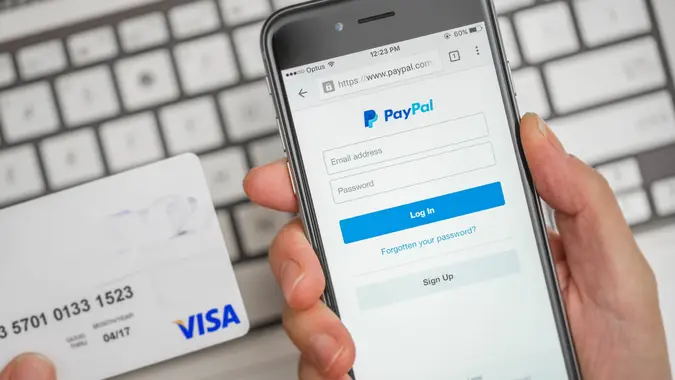Digital US Dollar By 2025? ‘Inevitable Evolution’ Could Come Quickly, Bank of America Analysts Suggest

Commitment to Our Readers
GOBankingRates' editorial team is committed to bringing you unbiased reviews and information. We use data-driven methodologies to evaluate financial products and services - our reviews and ratings are not influenced by advertisers. You can read more about our editorial guidelines and our products and services review methodology.

20 Years
Helping You Live Richer

Reviewed
by Experts

Trusted by
Millions of Readers
Following the long-awaited Fed discussion paper about the pros and cons of a potential U.S. central bank digital currency (CBDC) on Jan. 20, Bank of America economic analysts said they anticipate a U.S. CBDC to be issued between 2025 and 2030.
“Our view remains that CBDCs are an inevitable evolution of today’s electronic currencies, although the report implies that the Fed has not committed to an eventual CBDC issuance and will not issue one without support from the executive branch and Congress,” BofA strategists Alkesh Shah and Andrew Moss wrote in a Jan. 24 report. “A US CBDC would differ from existing digital money available to the general public because it would be a liability of the Federal Reserve, not of a commercial bank, and would therefore have no credit or liquidity risk.”
While this is the first step in a discussion as to whether — and how — a CBDC could improve the safe and effective domestic payments system, the paper does not favor any policy outcome, the Fed said on Jan. 20, as GOBankingRates previously reported.
“We look forward to engaging with the public, elected representatives, and a broad range of stakeholders as we examine the positives and negatives of a central bank digital currency in the United States,” Federal Reserve Chair Jerome Powell said in a statement at that time.
Analysts Agree: The Digital Dollar is Coming
Ron Geffner, a former Securities and Exchange Commission enforcement lawyer who now oversees the financial services department at Sadis & Goldberg, told GOBankingRates that while the viability and timing of the CBDC is being debated and still unclear, digital currency is clearly a consideration for the United States government and its regulators.
“We not only need to adopt comprehensive legislation, but we need to consider the security of the currency of the United States,” Geffner said.
The 33-page Fed paper — which was expected “soon” as of July 2021, according to Powell’s comments at the time — summarizes the current state of the domestic payments system and discusses the different types of digital payment methods and assets that have emerged in recent years, including stablecoins and other cryptocurrencies.
According to BofA’s strategists, potential benefits of a CBDC include preserving the dollar’s status as the world’s reserve currency, improving cross-border payments, increasing financial inclusion, and leveraging new use cases provided by a digital currency.
On the other hand, they say that potential risks of a CBDC include changing the financial sector’s market structure “by shifting deposits, increasing the liquidity risk of the financial system if deposits at commercial banks were converted to a CBDC and decreasing the efficacy of monetary policy implementation.”
The BofA analysts also note in the report that with approximately 90 countries investigating CBDCs, China’s digital yuan stands out as the CBDC with the largest potential for broad adoption and usage within the next several years. However, they also note that they don’t “see any particular CBDC in a winner-take-all position as international standards still need to be ironed out to enable cross-border payments and exchange.”
The Fed said that to fully evaluate a potential CBDC, it is asking for public comment on 22 questions with a posted deadline of May 20, 2022.
More From GOBankingRates
 Written by
Written by  Edited by
Edited by 

























